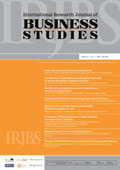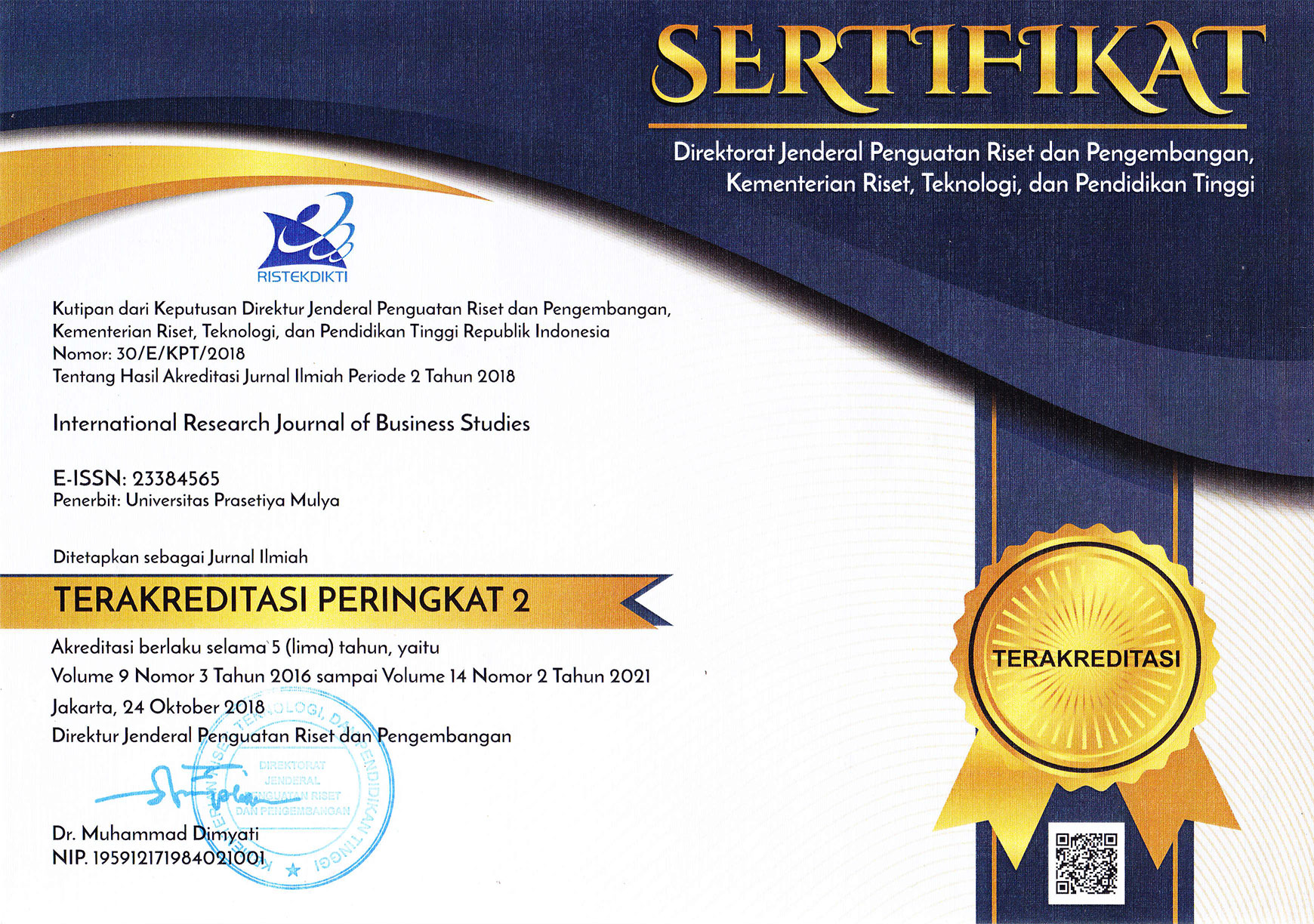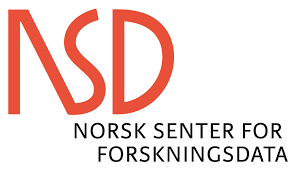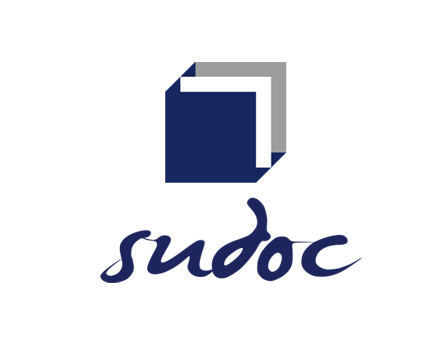Article Metrics |
|
|
Service Recovery and Its Effect on Students Satisfaction, Trust, and WOM Communication
Abstract
This study aims to examine the effect of service recovery, using distributive justice, procedural justice, and interactional justice approaches, on students satisfaction, trust, and WOM at excellent, flagship and non-flagship private universities in East Java, Indonesia. A total of 240 students participated in this study. Sampling was conducted using convenience sampling technique. Data analysis was done using regression assisted by SPSS and WarpPLS program. The results of this study provide university managers understanding that the low bargaining position perceived by the students has an impact on various aspects of teaching and learning process which eventually leads to the levels of students satisfaction, trust, and WOM. This study also suggests what should be done in the service recovery policy made by each university to increase the students satisfaction, trust, and positive WOM.
Keywords: Service recovery, Satisfaction, Trust and Word of mouth (WOM)
Full Text:
References
Beatriz Moliner-Velzquez, Mara-Eugenia Ruiz-Molina, Teresa Fayos-Gard, (2015)"Satisfaction with service recovery: moderating effect of age in word-of-mouth", Journal of Consumer Marketing, Vol. 32 Issue: 6, pp.470 484, https://doi.org/10.1108/JCM-12-2014-1251
Dick, A.S. and Kunal Basu. (1994). Customer Loyalty: Toward an Integrated Conceptual Framework. Journal of the Academic of Marketing Science. Vol. 22 (2): 99-113.
De Matos, C. A., Carlos. A. V. R. and, Ricardo T. V, Valter A. V. (2009). Consumer Reaction to service failure and recovery: the moderating role of attitude toward complaining. Journal of Services Marketing, Vol.23, No. 7, pp.462475
Doan T. Nguyen, Janet R. McColl?Kennedy, Tracey S. Dagger. (2012) "Matching service recovery solutions to customer recovery preferences", European Journal of Marketing, Vol. 46 Iss: 9, pp.1171 - 1194
East R. (2000). Complaining as Planned Behavior. Psychology & Marekting.Vol. 17 (12):1077-1095.
Gustaffson, Anders. (2009). Customer Satisfaction with Service Recovery. Journal of Business Research. Vol.62: 1220-1222
Henning-Thurau, T., Langer, M. F., and Hansen, U. 2001, Modeling and Managing Student Loyaltyan Approach Based on the Concept of Relationship Quality, Journal of Service Research, Vol. 3, No. 4, pp. 331344.
Hsin?Hui Lin, Yi?Shun Wang, Li?Kuan Chang. (2011) "Consumer responses to online retailer's service recovery after a service failure: A perspective of justice theory", Managing Service Quality: An International Journal, Vol. 21 Iss: 5, pp.511 534
Hume, Margee, and Gillian Sullivan Mort. (2008). The consequence of appraisal emotion, Service quality, perceived value and customer satisfaction on repurchase intent in the performing arts. Journal of Services Marketing. Pp 170- 182.
https://www.kemenkopmk.go.id/artikel/menristek-dan-dikti-tindak-perguruan-tinggi-yang-terima-mahasiswa-melebihi-kuota.
https://www.lapor.go.id/id/1106547/keluhan-fasilitas-pelayanan-pendidikan-dan-program-sarjana-ekstensi-di-universitas-jambi.html
http://bintan.batamtoday.com/berita53110-Protes-Kebijakan-Kampus,-Mahasiswa-UPB-Berunjuk-Rasa-Bawa-Keranda.html.
http://edukasi.kompas.com/read/2012/07/26/17404077/SPP.di.Unibraw.Naik..Mahasiswa.Protes.
Gronroos, C. (1988). Service quality: the six criteria of good perceived service. Review of Business, Vol. 9, Winter, pp. 10-30.
Kana, Any Agus. (2001). Mass Customization Sebuah Alternatif untuk meningkatkan kepuasan Pelanggan, Yogyakarta. Jurnal kompak, STIE YO,
Kelley, Douglas Hoffman, and Mark A. Davis. (1993). A Typology of Retail Failures and Recoveries. Journal of Retailing 69 (winter): 429-452
Kotler, Philip dan Kevin Lane Keller. (2009). Manajemen Pemasaran Edisi Ketiga Belas Jilid 1. Jakarta: Erlangga.
Lovelock, C. (2001). Service Marketing: People, Technology and Strategy. 4th ed. Upper Saddle River, NJ: Prentice Hall International, Inc.
Chistopher H Lovelock dan Laurent K Wright (2007). Manajemen Pemasaran Jasa, Alih Bahasa Agus Widyantoro, Cetakan Kedua, Jakarta, PT. INDEXS
Mattilla, Anna S. (2001). The Effectiveness of Service Recovery in the Multi-Industry Setting. Journal of Service Marketing. Vol. 15. No. 7, pp. 583-596.
McDougall, G.H., & Levesque, T. (2000). Customer satisfaction with service: Putting perceived value into the equation. Journal of Services Marketing. 14(5), 392410
Mahfud Sholihin dan Dwi Ratmono. (2013). Analisis SEM-PLS dengan WarpPLS 3.0 Untuk hubungan nonlinier dalam penelitian sosial dan bisnis. Penerbit Andi Yogyakarta.
Min Zhang , Xujing Dai , Zhen He , (2015) "An empirical investigation of service recovery Ine-retailing: An operations management perspective ", Journal of Service Theory and Practice, Vol. 25 Iss: 3, pp.348 367
Parasuraman A, Zeithhaml V.A, Berry L.L. (1985). A conceptual model of service quality and its implication for future research. Journal of Marketing. Vol 49: 41-50.
Richard L. Oliver. (1980). A Cognitive Model of the Antecedents and Consequences of Satisfaction Decisions. Journal of Marketing Research. Vol. 17, No. 4.pp. 460-469
Robert Johnston, Stefan Michel, (2008) "Three outcomes of service recovery: Customer recovery, process recovery and employee recovery", International Journal of Operations & Production Management, Vol. 28 Iss: 1, pp.79 99
Seider, Kathleen and Berry, Leonard L. (1998). Service Fairness: What it is and why it matters. Academy of Management Executive. Vol. 12. No. 2.
Singh, J. and Shefali Pandya. (1991). Exploring the Effect of Customer Dissatisfaction Levelon Complain Behaviors. European Journal of Marketing. Vol. 25 (9): 7-21
Tax, Stephen S., Brown, Stephen W., and Chandrasekaran. (1998). Customer Evaluation of Service Complaint Experiences: Implications for Relationship Marketing. Journal of Marketing, Vol. 62 (April).
Thomas Baker , Tracy Meyer , (2014) "Explanation information and source in service recovery initiatives", Journal of Services Marketing, Vol. 28 Iss: 4, pp.311 318
Tronvoll, B. (2011). Negative Emotions and Their Effect on Customer Complaint Behaviour. Journal of Service Management, Vol. 22, No. 1, pp. 111-134.
Zeithaml, V.A., Berry, L.L. and Parasuraman, A. (1993). The nature and determinants of customer expectations of services. Journal of Academy of Marketing Science, Vol. 21, Winter, pp. 31-46
Zemke, R. (1999). Service recovery: turning oops into opportunity. in Zemke, R. And Woods, J. (Eds), Best Practices in Customer Service, AMA Publications, NewYork, NY, pp. 279-88.
Copyright (c) 2018 Soni Harsono
International Research Journal of Business Studies has been covered by the following services: | ||||||||||||||||||||||||
|
 
 




















